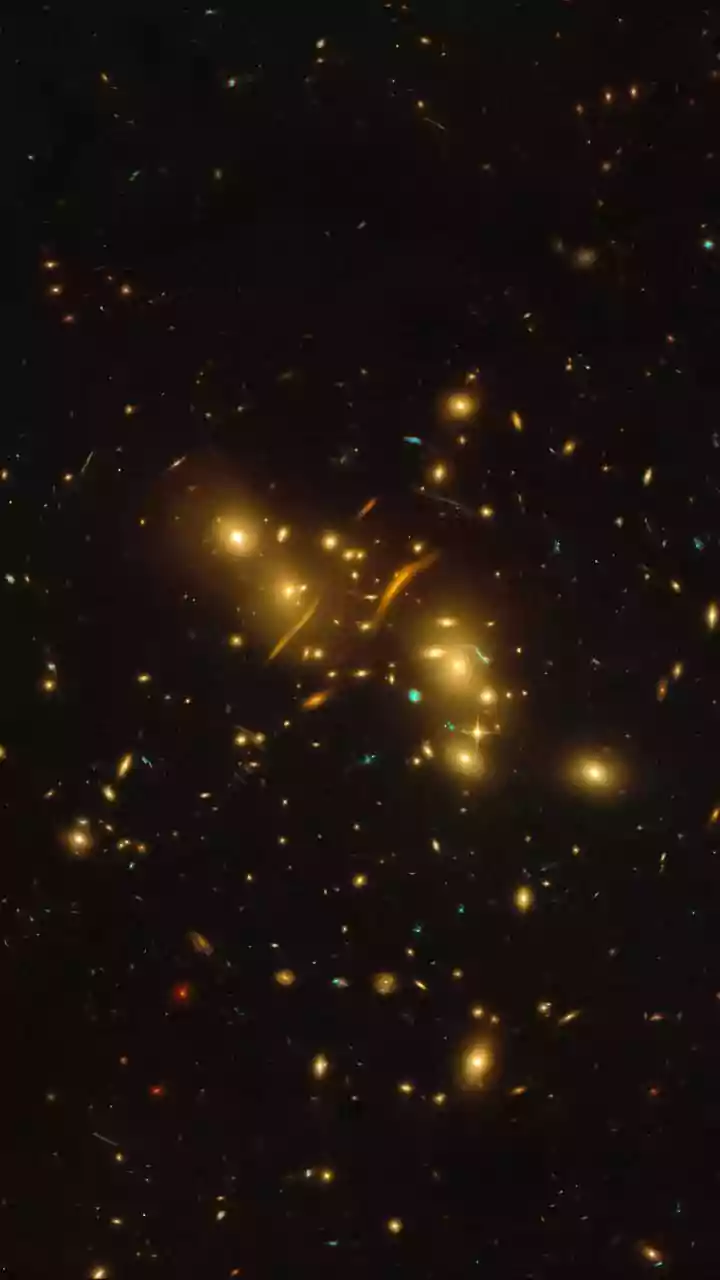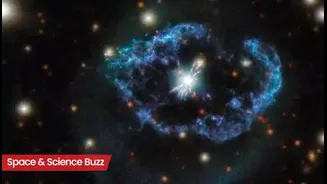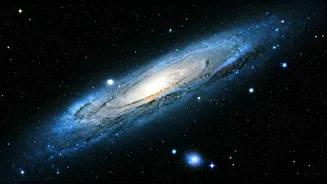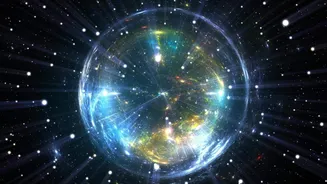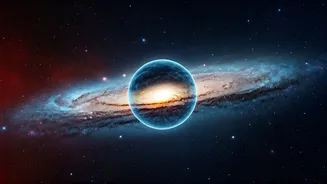Challenging Cosmos
The conventional understanding of the universe relies heavily on the existence of dark matter and dark energy. These entities are essential to explain
the observed phenomena, such as galactic rotation curves and the accelerated expansion of the universe. Dark matter, invisible and undetectable directly, is inferred from its gravitational effects, holding galaxies together. Dark energy, a more enigmatic force, is proposed to be responsible for the accelerating expansion of the universe. However, recent research introduces compelling alternative explanations for these phenomena, thereby challenging these foundational assumptions. This new study proposes a re-evaluation of the role of these invisible components, prompting scientists to reconsider established models and search for alternative explanations for the universe's observed behavior.
Seeking Alternatives
The study suggests that the observed effects attributed to dark matter and dark energy might be explained by modifications to existing physics. It explores the possibility that our understanding of gravity, as described by Einstein's theory of general relativity, is incomplete or requires adjustment at the cosmic scale. One avenue of exploration involves modified Newtonian dynamics (MOND), a theory that suggests a change in the laws of gravity at very low accelerations. Such theories propose that the observed galactic rotation curves, usually explained by the presence of dark matter, could be accounted for by the dynamics of gravitational interactions. Other alternative models seek to refine our understanding of the fundamental forces, providing a framework that doesn't rely on the existence of dark matter or dark energy to explain the structure and evolution of the universe.
Testing the Theories
Validating these new theories requires rigorous observational testing. Scientists are looking for ways to differentiate between the standard model, which incorporates dark matter and dark energy, and the alternative theories. This involves gathering data from astronomical observations, such as analyzing the distribution of galaxies, the behavior of gravitational lenses, and the cosmic microwave background. Observational data is compared with the predictions made by different models. This is a complex undertaking, as each theory will need to match the results from a variety of observational tests to gain credibility. Furthermore, scientists are utilizing computer simulations to model the large-scale structure of the universe under the assumptions of various models. These simulations help to visualize the implications of the theories and identify crucial observational tests to distinguish between them.
Cosmic Implications
If alternative theories gain wider acceptance, it would have profound implications for our understanding of the universe's origin and destiny. A universe without dark matter and dark energy might behave differently, impacting predictions about its expansion rate, large-scale structure, and ultimate fate. It could also shift the focus of research to refine our understanding of gravity and the fundamental laws of physics. Understanding this shift will require a reassessment of existing cosmological models and a re-evaluation of the universe’s composition. Furthermore, a shift in the standard model would potentially eliminate the need for exotic forms of matter and energy, simplifying our view of the cosmos. This could bring about a significant simplification of current cosmological models and change the way scientists think about the universe.
Future Research
The exploration of these alternative theories opens up exciting avenues for future research in astrophysics and cosmology. Scientists will continue to refine and develop these models, seeking to match them with the observations and resolve any discrepancies. This may lead to advancements in areas like high-precision measurements of the expansion rate of the universe, detailed mapping of the distribution of galaxies, and advanced simulations of the formation and evolution of cosmic structures. The search for a deeper understanding of gravity and the fundamental forces will become a key objective. Moreover, ongoing investigations into the properties of gravitational waves might help to provide further insights into the nature of the universe. A significant aspect of future research will involve collaboration among different research groups to share data and validate the results to further refine and test these new theories.



